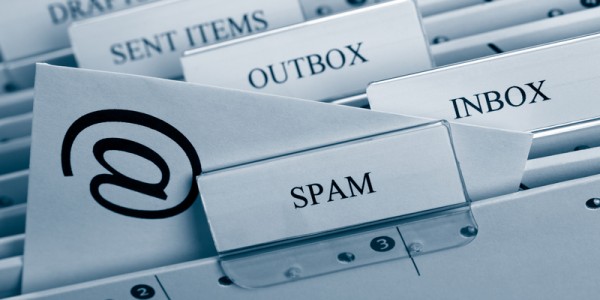10 Tips to Increase Your Email Deliverability
Kevin Huxham | On 25, Apr 2014
Latest posts by Kevin Huxham (see all)
- 10 Tips to Increase Your Email Deliverability - April 25, 2014
Email marketing is an art. It relies on trial and error, it requires practice and continuous testing, and thrives on clean lists, simple content. Effective email marketing requires that you listen and engage with your audience. It depends on the ability to track the results that help you fine-tune future campaigns to increase engagement.
With a $40 return on every $1 invested, according to the DMA in 2013, it’s too good a deal to pass up.
It’s essential to remember that the best content in the world, the best customers on your list, and the soundest metrics are worth next to nothing if your email doesn’t get to the inbox.
Below are ten tips to help you be successful in getting the most out of your email marketing efforts:
Tip 1: Keep lists clean
How:
Create a list based on people who have clearly expressed an interest in receiving emails from you - not just people who saw you at a trade show and gave you a business card or someone who bought something on your website. Make sure that when they give you their email address, your contacts understand that they’ll be receiving emails from you… and what the content of those emails will be.
Why:
When you have proper consent and people are expecting to receive emails from you, success rates for deliverability go way up.
Tip 2: Keep lists current
How:
Send a campaign at least once per month to make sure your list is up to date. The longer you wait, the worse off your results will be. In fact, the longest you should allow a list to go dormant is 6 months.
Why:
People change, addresses change, companies change. Sending to an old list may cause a large portion of the emails you’re sending to bounce - which can harm your reputation as a sender and might even cause your domain to get blacklisted. If you are blacklisted, it is best to find out why and resolve it before continuing with your email marketing efforts.
Tip 3: Win them back
How:
You have a few options to win back clients who haven’t engaged via email with you recently:
● Create a group of people who haven’t opened a campaign in a while (the 5 past campaigns you’ve sent, or last 3 months) and pause sending to them until you can send them a campaign with highly targeted information taken from links they’d previously clicked on or driven by recent purchases.
● Create a specific campaign asking them if they want to continue receiving your emails.
● Inform them that since the weekly email hasn’t been read, that you’re going to move them to your monthly campaign.
Why:
People lose interest in newsletters for a variety of reasons - loss of interest in the topics, change in needs, new priorities. While you should never lose contact with people that matter, you should also make sure that you’re sending them topics that interest them, at a frequency that makes sense. Otherwise, you’re just carrying around dead weight for no reason and it’s hurting your delivery.
Tip 4: Have an online presence
How:
Stop using your Gmail address to promote your brand: buy your own domain, build your website. Include an email signup form on your homepage to help populate your list. Be vocal on social media - choose two or three to start and constantly push out what inspires you, motivates you; ask questions; start a blog, offer advice and share your expertise.
Why:
When you send an email with your domain name in the email address you send from, and include the name of a person as well as the name of the business, you’re more likely to be recognized… and are improving your odds at getting your email opened. The more channels you offer for people to engage with you, the more opportunity you give them to engage.
Tip 5: Develop engaging content
How:
Personalize emails when you can. Keep content simple, aim for brevity and exercise balance of text and images. The gist of your emails should be understood even if images aren’t seen.
Why:
To help boost your open rates, you should also consider segmenting your list so you can be more razor-like in personalizing your content to a more specialized audience. Whether your email is all text or all images, unbalanced content causes red flags.
Tip 6: Test, test, test!
How:
Find out when the most people open your emails: try sending your campaign at different times on the same day every week, then different days of the week. Increase or decrease your frequency, but give your contacts the option to manage how often they receive your emails. Change the layout of the campaigns - use heatmaps to see where people click. Create a group of the people who didn’t open your latest email and change the subject - compare which email performs better.
Why:
Trial and error is very valuable when it comes to honing your skills as an email-marketing guru. Different industries will have different times at which they perform better - and maybe you have more customers in a different time zone than you thought - it isn’t 8 AM everywhere at the same time.
Tip 7: Track performance over time
How:
After you send an email marketing campaign, look at the reports and check your results:
● Open rates: Open rates are calculated by (people who display the images + people who click on a link) divided by the total number sent.
● Click rates: Click rates are calculated by (people who clicked on a link) divided by the total number of opens.
● Unsubscribes: people who clicked on the “Unsubscribe” link in your email.
● Complaints: The number of people who flagged your email as “Spam”
Why:
Gaining a window into your campaign’s open rates and click-through rates will help with tracking growth and success over time. This data helps you to get insights into what content and subject lines are successful and how to improve your approach. Make sure you stay in line with what you promised and what you’re delivering by keeping an eye on Unsubscribes, but bear in mind that people will unsubscribe over time. While it’s possible that people will flag you as spam (especially if you haven’t sent them an email in awhile,) if too many do so, your domain may get blacklisted, so keep a close eye, and build your list using express consent.
Tip 8: Use an Email Service Provider (ESP)
How:
Try different options. Stick with the one that fits best with what you want to do, and is within your budget.
Why:
By signing up to an email-marketing provider, you instantly gain years of experience, deliverability history and expertise. ESPs help with monitoring your email deliverability, bounce-backs and ensuring your compliance with anti-spam regulations so you can stay out of trouble. When you send your email campaign through an ESP, they should provide you with an easy way to include a standard opt-out and global opt-out link, as well. If you have no design experience, ESPs can help by providing templates to make email campaigns look professional.
Tip 9: Keep it simple!
How:
Stick to HTML the way it was written in 1999 or use templates provided by your trustworthy email service provider.
Why:
There can be many views of the same email. Gmail, Outlook, Yahoo, et cetera, may all display your email differently. Added to that, complex emails with JavaScript, fancy HTML code, and attachments might raise a red flag.
Tip 10: Avoid being flagged as Spam
How:
Choose your words carefully. Words such as “free,” “great offer,” or “special promotion” can hit the radar of content filters. To avoid being blocked, regularly review online lists of “Words to avoid in emails.” Lastly, watch your use of the exclamation point, shouting with ALL CAPS, poor spelling and don’t replace letters by an alphanumeric equivalent (sometimes referred to as “leet speak”.)
Why:
Some words trip SPAM filters into high gear - mostly things to do with gambling, adult content and offers that are just too good to be true. Too many exclamation points are scary, shouting is just plain rude, and no one understands tweens who contract words mixed in with bizarre characters anyways, so why should SPAM filters put up with it?
Never underestimate the power of email marketing. While social media is getting a lot of buzz right now, not everyone is always logged into Facebook, Twitter, or Google+. Most people constantly check their emails, even when they are not at their computers. Meet people where they’re at and have fun doing it!

















Submit a Comment